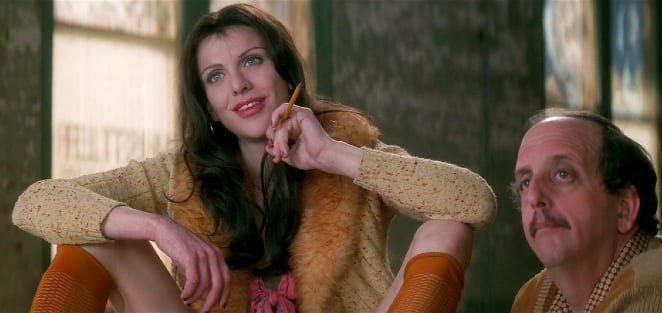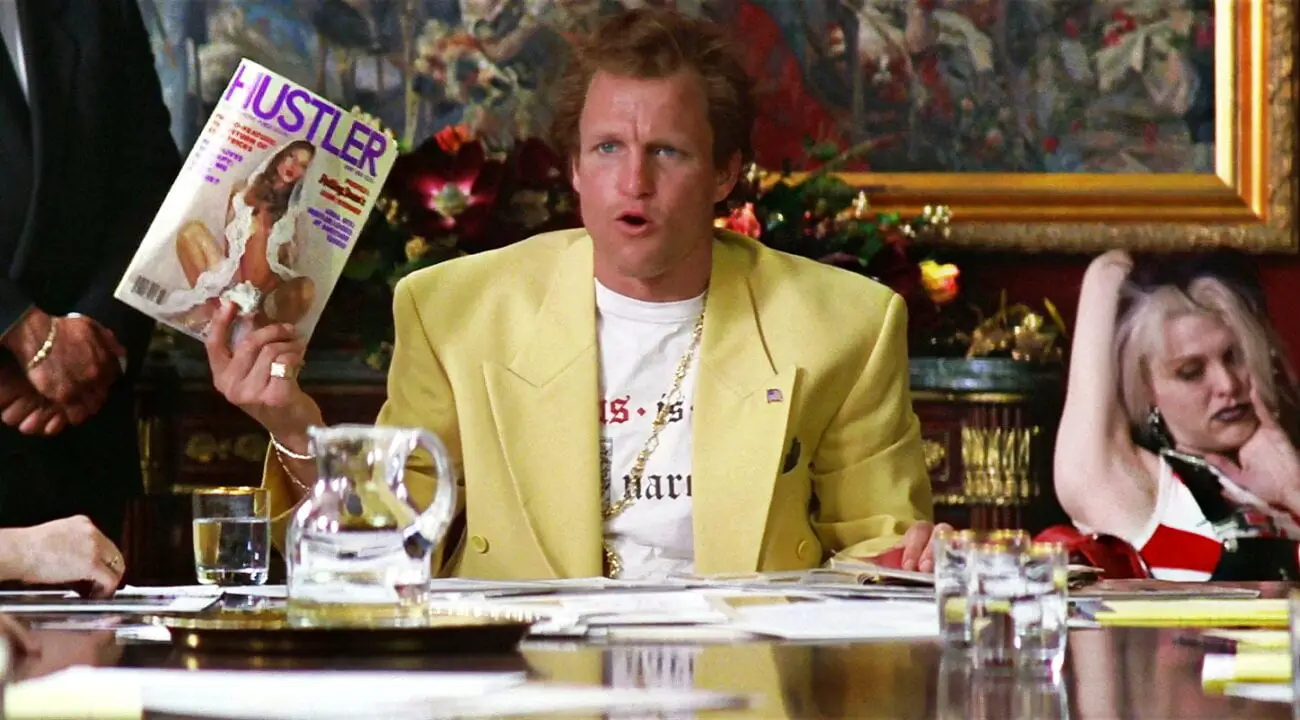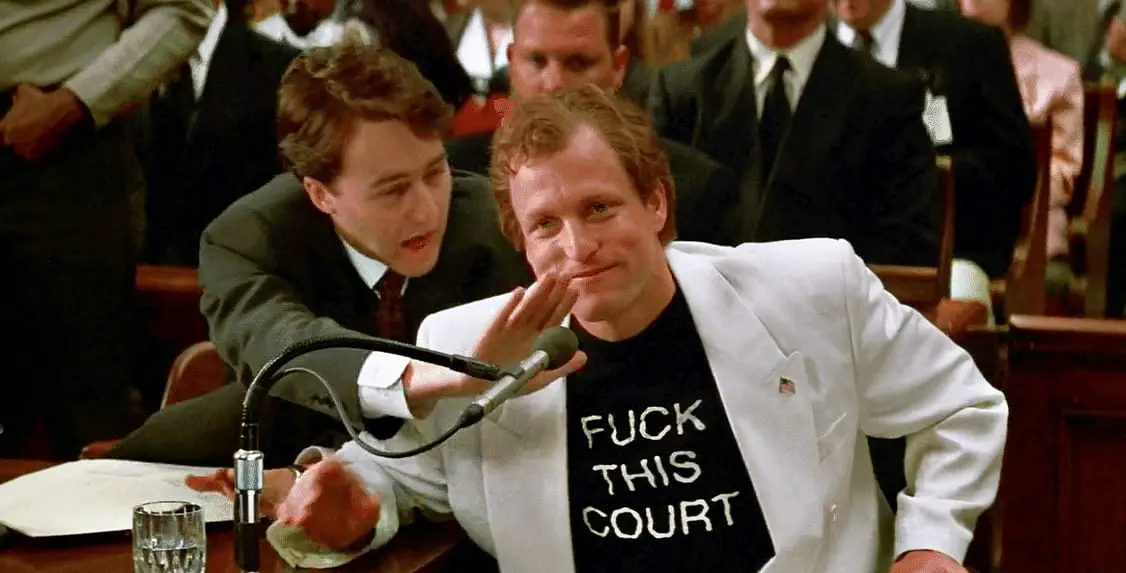Years ago, I worked in one of those mom-and-pop video stores — the kind you see on roads directly across the street from gas stations and Subway locations. It wasn’t as upscale or ritzy as working at Blockbuster but I got to work by myself and watch movies on a small TV (Indiana Jones and the Temple of Doom got played a lot) and I was able to load up on free posters every week on new release day. What I remember most about it was the store’s little section of “adult” titles or “dirty” movies. This section you had to enter into through a closed door and nobody under 18 was allowed in. The bulky titles inside that room all had a specific number attached to the spine and when a customer was interested in a certain title, instead of carrying the large, graphic box all the way across the store in plain view of the other customers who were there to rent The Matrix or Never Been Kissed, they’d just carry a slip of paper with the corresponding spine number on it and hand it to me and I’d quickly check them out, so they could be on their merry way. By the way, these customers were not the type of people you’d expect to rent dirty movies. Many of these patrons of, let’s call it “erotica”, were actually well-known, upstanding members of my city. Some even worked for the city.
I thought about those people when I re-watched the 1996 dramatic biopic The People vs. Larry Flynt recently. That movie is filled with the type of consumers of adult content I just mentioned but more than that, it’s a movie about the people who provide that content and a movie that advocates for both groups to live in a free enough society where neither should be persecuted for it. However, Milos Forman’s film is less concerned with the average consumer of such material and more about the people who make and distribute it. But as is often the case, someone has to take the rap for the moral degradation of our society, and for the better part of the 1970s and well into the 1980s, that man was Larry Flynt.
Flynt founded Hustler magazine in 1974. It was a magazine with less polish and sheen than that of Hugh Hefner’s Playboy, which focused more on titillation and had an audience more upscale than that of its rivals. Penthouse was plenty smutty but at the time of its inception and early years, it was rather softcore. In the 90s, it edged into more hardcore material no doubt inspired by the influx of 80s MTV hair metal bands with videos such as Mötley Crüe’s “Girls, Girls, Girls” playing during any hour of the day. Most of these videos featured girls, often in cages, withering about on hoods of cars and getting doused by large fire houses.

Larry Flynt was a man ahead of his time, however. If pretty girls were what his readers wanted, he was going to showcase them in Hustler, in extremely explicit ways. Was Flynt a monstrous pervert or a genius? Perhaps he was both, as by 1975 Flynt had made his first million. Not bad for a poor boy from Kentucky who couldn’t even afford shoes when he was young.
Forman’s film however, is not a biopic of the life of Larry Flynt. In fact, the movie spans only fifteen years of Flynt’s life who was 54 at the time of its release in December 1996. Pretty much all the entire movie focuses on the years 1973-1988, when Flynt (Woody Harrelson) created his Hustler empire, married his lover and business partner Althea (Courtney Love), found himself the target of right-wing moral crusaders Charles Keating (James Cromwell) and Jerry Falwell (Richard Paul), brought to trail, was left paralyzed from a shooting, become a born-again Christian, renounced Christianity, was institutionalized, watched Althea die from AIDS, and argued his entire belief system before the Supreme Court of the United States. That’s certainly more than enough for one film.
Tackling a biopic is a trick matter. It helps of course when the subject is still alive and at one point, the actual Larry Flynt appears in the movie as one of the many judges antagonized by the on-screen Flynt. Screenwriters Scott Alexander and Larry Karaszewski exhibited their fondness for those who thought outside the box with Ed Wood in 1994. That movie was widely celebrated, but their first before that one movie was a different story.
Their previous effort was the 1990 low-brow John Ritter comedy Problem Child — a movie critics loathed and is not what you’d expect from a future Academy-Award nominated writing team. But look at Problem Child and look at The People vs. Larry Flynt, and you can see the obvious similarities between those movies’ main characters. Problem Child’s young unruly brat (Michael Oliver) is Larry Flynt as an adult. He acts out, screams, throws things, acts belligerent and does not respond well to authority–and neither did Larry Flynt. I’d wager there’s much more of little Oliver in Flynt than there was Ed Wood but there are similarities as well. Both Flynt and Wood shared a penchant for celebrating femininity and reveling in trash.
The People vs Larry Flynt was made in 1996, just right before the Bill Clinton/Monica Lewinsky presidential sex scandal (by the way, Lewinsky has one of the wittiest and sharpest accounts on Twitter, so you should totally give her a follow) and four years after Madonna’s coffee table book of erotic S&M photography Sex (which by today’s standards is not that smutty at all and should be tracked down as well). The fact that a major studio such as SONY would (and did) finance and release the film is a miracle in itself (not to mention, it opened Christmas day). Perhaps it was the influence of then-red hot Oliver Stone’s influence as producer or the fact that Harrelson was a bankable star and Love was slaying the Billboard charts with her band Hole, but here was a big budget movie about a pornographer in a rather sexless year in terms of movies. The big draws Independence Day, Mission: Impossible and Twister didn’t feature any lovin’ at all. Even that year’s romances like One Fine Day and The English Patient were quite tame. Music videos were sanitized as well: the likes of Whitesnake and Warrant were taken over by Shania Twain and Whitney Houston. They were sexy, but they were sexy on their terms. One could say that the most scandalous thing of The People vs. Larry Flynt was the controversial movie poster which a number of theaters refused to display (the same thing happened two years earlier with the release of Disclosure).

From a pure movie-going standpoint, The People vs. Larry Flynt is a treat. For a movie which juggles a number of serious topics (female sexuality, censorship, religion, AIDS, mental illness) the script by is very, very funny while also very insightful. Flynt argues through the years that the images inside the pages of his magazine are far less extreme and disturbing than what one might see during the evening news. He argues that the moralists waging a war against him are the same people sending Americans to die in combat. At one point Forman has Harrelson as Flynt stand before a movie-theater sized screen displaying the American flag, images of naked women and casualties of Vietnam. Forman frames Flynt as the General Patton of free speech.
The People vs. Larry Flynt is a triumph in terms of production design (Patrizia von Brandenstein), costume design (Arianne Philips and Theodor Pistek), editing (Christopher Tellefsen) and scoring– Thomas Newman’s music is rather hauntingly restrained until Flynt starts to act out and the composer’s plucky strings get busy as if he’s scoring a deranged Daffy Duck from a Looney Tunes cartoon. The opening section of the movie does a great job of setting the feel of the early 70s as run-down, low cost strippers shoot cheap plastic pistols in their cowboy boots covering up dirty yellowish stockings. The costumes aren’t played for laughs as they were in Harrelson’s summer ’96 movie Kingpin. They establish a time and place and weariness among the characters.
Both Harrelson and Love were Oscar nominated for their performances and the film was nominated for best adapted screenplay. Director Forman films this tale on nearly the epic scale he made his 1984 classic Amadeus, and it’s not hard to see the similarities between his Mozart and Flynt. Both were creative individuals — in their different ways. Both had a way of seeing life beyond the limits and constricts of their societies. They were both lustful, hungry for women, sex, respect and, above all, fame. Both were bratty but both, in their own ways, changed the histories of their respective fields (music and publishing). Yes, I understand it is quite the stretch to compare Mozart, composer of “The Marriage of Figaro” to Larry Flynt, creator of Hustler magazine, but the personality traits (at least in Forman’s view) do complement each other.
In 2021, the issue of free speech came to the forefront of our society when Twitter and Facebook banned Donald Trump, the now former U.S. President. Those on Trump’s side called it a blatant abuse of reach and power and whether you sided with Trump supporters (I didn’t) they did raise a valid point: if big tech could cut off communication methods used by the President of the United States, surely they could do it to anybody. I’m sure most people already understand this when they sign up for a Twitter or Facebook account just as they understand that if you enter a shopping mall you can’t stand in the middle of it and yell obscenities to anybody you don’t like the look of. You’ll be dealt with by law officials if you did that.
Larry Flynt understand the rights he had as an individual to say what he wanted in print but when he acted out in a court of law he was dealt with and this movie is clearly on his side even in the moments when those around him couldn’t quite understand why he was acting out in such a manner. If there’s one tiny drawback to The People vs. Larry Flynt it’s that this behavior is never fully explained. He’s just a problem child, so take him or leave him for it.
For all his work, Hustler, despite its success, never did reach the popularity of Hefner’s magazine and the more famous individuals in entertainment, music, sports, art, literature and even politics never warmed to Flynt’s publication the way they did Hefner’s. Playboy was a lifestyle to aspire to. Hustler was one you kept to yourself if you even wanted to go there. For example, the March 2007 issue of Playboy featured Mariah Carey — one of the most well-known and successful female performers in music history. The March 2007 issue of Hustler featured a nude model named Veronica Saint–quite a contrast in terms of fame and content (to further illustrate the difference, when I used Bing to search for the just mentioned Playboy, it displayed the Carey issue no problem. For the Hustler issue I had to change the search settings in my browser from “moderate” to “off”). It’s a fight for legitimacy Flynt has been waging ever since 1973. Then again, Hefner never had a case argued before the Supreme Court if the United States as depicted in Forman’s film.

25 years after the movie’s premiere Flynt is still head of Hustler Inc., (he later launched two more publications, Taboo and Barely Legal) and most likely content with his place in American history as a champion of free speech and his ‘if you don’t like us, don’t buy us but respect our right to make our content available,’ attitude still remains. It’s interesting that when this film received a boatload or Oscar nominations in the spring of 1997, Flynt himself was not invited to the actual ceremony (he wound up being Harrelson’s guest). Even when he was being applauded, he was still being shunned. The Motion Picture Association of America loved the movie of his life, they just didn’t care too much for the man.
Such is the life of Larry Flynt.




I work for Dr. Susan Block and Max Lobkowicz who knew Larry Flynt. We have a rare movie post of the original movie cover that was banned in America but shown in Czechoslovakia titled: L’ud vs. Larry Flynt of course in America it is called The People Vs. Larry Flynt. If you are a true movie buff this movie’s memorabilia is the ultimate collection find. Buy it at the link below.
https://drblockspleasureshop.com/product/the-people-vs-larry-flynt-movie-poster/